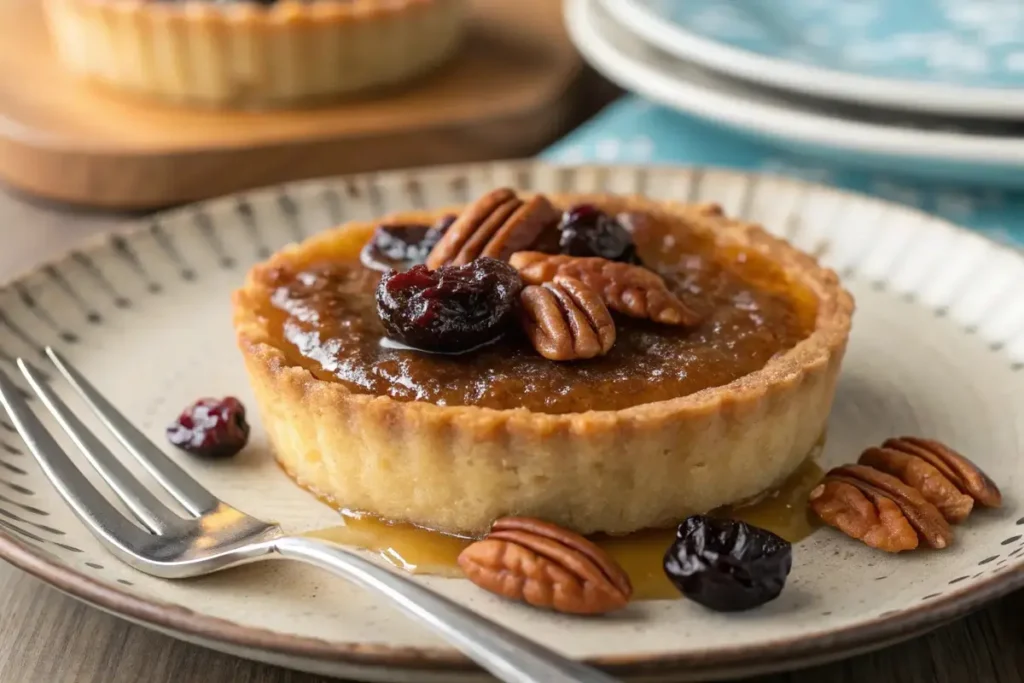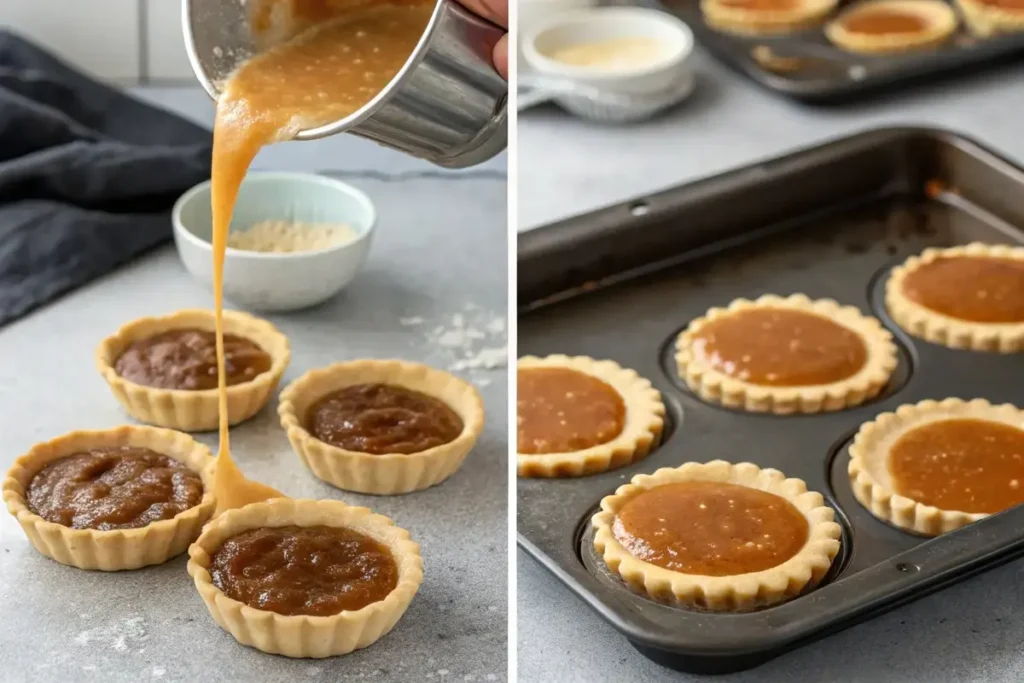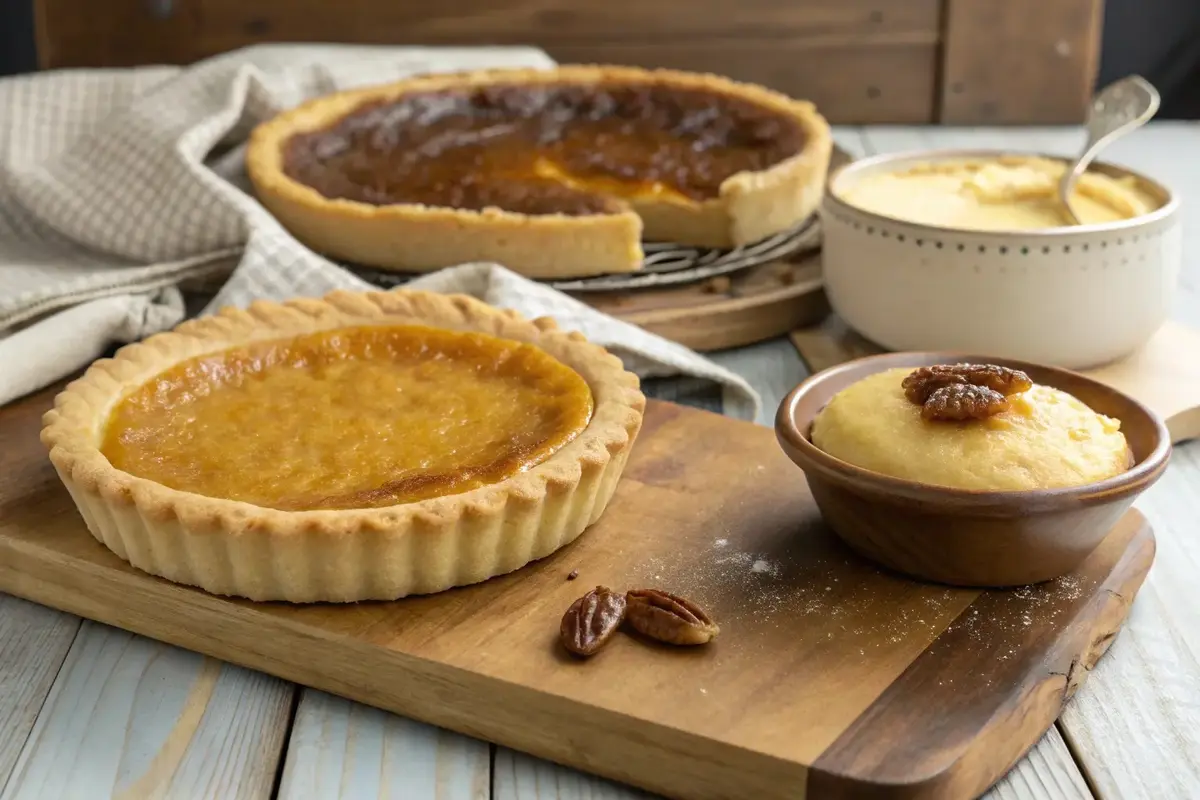Introduction
Sugar pies and butter tarts are two iconic desserts that have charmed taste buds for generations. Both are steeped in history and offer unique flavors and textures, yet they often spark a debate: What is the difference between a sugar pie and a butter tart? This article dives into the origins, ingredients, preparation methods, and distinctive characteristics of these two beloved treats. Whether you’re a seasoned baker or a curious dessert enthusiast, you’ll gain insight into what sets these delicacies apart and how to choose between them.
Part 1: What is a Sugar Pie?
Origins and Cultural Background
Sugar pie holds a special place in French-Canadian cuisine, tracing its roots back to Quebec. It was originally a dessert of necessity, made from simple ingredients readily available in a household pantry. Over time, sugar pie became a hallmark of traditional Quebecois celebrations, such as Christmas and family gatherings. Its legacy extends beyond Canada, with variations found in Belgian and American cooking as well.
Key Ingredients in Sugar Pie
The recipe for sugar pie revolves around a few essential ingredients, which come together to create its signature creamy sweetness.
- Brown Sugar: The star ingredient, lending a caramelized flavor to the filling.
- Cream or Milk: Adds richness and creates the custard-like texture that makes sugar pie so indulgent.
- Flour or Cornstarch: Acts as a thickening agent to ensure the filling sets properly.
- Butter: Enhances the flavor and contributes to the smooth, velvety consistency.
Variations might include the addition of maple syrup or molasses for extra depth and complexity.
Texture and Flavor Profile
Sugar pie is known for its custard-like filling that’s both creamy and smooth. The caramelized brown sugar provides a deep, rich sweetness that is balanced by the buttery crust. Unlike many desserts, sugar pie doesn’t rely on spices for flavor; instead, it lets the simplicity of its ingredients shine.
Part 3: What is a Butter Tart?
Exploring the Butter Tart
Historical Significance
The butter tart is a quintessential Canadian dessert with roots that trace back to early settlers in Ontario. It emerged as a simple yet decadent treat made with pantry staples. Over time, butter tarts have evolved into an iconic symbol of Canadian cuisine, celebrated in festivals and cherished by generations.
Each province in Canada has its take on the butter tart. In Ontario, the debate often revolves around whether the filling should be runny or firm, while regions like Nova Scotia incorporate unique twists like rum or nuts. This variety reflects the butter tart’s versatility and enduring appeal.
Essential Ingredients of a Butter Tart
At its core, the butter tart requires just a handful of ingredients:
- Butter: The defining ingredient that lends richness and depth to the filling.
- Sugar: Typically brown sugar or granulated sugar, creating a sweet, caramel-like base.
- Eggs: Used to bind the filling and give it a silky texture.
- Pastry Shell: A flaky crust serves as the perfect vessel to hold the gooey filling.
Optional ingredients like raisins, pecans, or even chocolate chips allow for endless customization. These additions add texture and flavor, catering to different tastes.
Texture and Flavor Characteristics
Butter tarts are beloved for their gooey, buttery filling that oozes with every bite. The richness of the filling contrasts beautifully with the flaky crust, creating a textural harmony that’s hard to resist.
The flavor is indulgently sweet with notes of caramel, butter, and sometimes a hint of nuttiness or spice, depending on the chosen add-ins. Unlike sugar pie, butter tarts are smaller in size, making them a portable and convenient treat.

Part 4: Key Differences Between Sugar Pie and Butter Tart
Comparing Ingredients
While both desserts share similar pantry staples, their key ingredients set them apart:
- Sugar Pie: Primarily relies on cream or milk for its custard-like filling, along with brown sugar for sweetness.
- Butter Tart: Focuses on butter and eggs to create a gooey, rich filling. The addition of optional ingredients like raisins or pecans adds variety to butter tarts, while sugar pie remains more traditional.
Differences in Preparation
The method of preparation highlights their distinct characteristics:
- Sugar Pie: The filling is typically cooked on the stovetop first, allowing the sugar and cream to caramelize into a silky custard before being poured into the crust for baking.
- Butter Tart: Requires no pre-cooking. The filling is mixed together and poured directly into the pastry shell before baking, making it a simpler process overall.
Flavor and Texture Contrasts
When it comes to taste and texture, the differences are significant:
- Sugar Pie: Known for its smooth, custard-like texture and a caramelized sweetness that’s not overly rich.
- Butter Tart: Offers a gooier consistency with a pronounced buttery flavor. The flaky crust complements the filling’s richness, making it more indulgent than sugar pie.
Regional Variations
Both desserts boast regional nuances that add to their charm:
- Sugar Pie: In Quebec, sugar pie often incorporates maple syrup, highlighting the region’s local resources.
- Butter Tart: Recipes vary across Canada, with some regions preferring runny fillings while others opt for a firmer texture. Add-ins like raisins or nuts also vary depending on regional preferences.
Part 5: How to Choose Between a Sugar Pie and a Butter Tart
When to Choose a Sugar Pie
Sugar pie is a delightful option for those who appreciate desserts with a creamy, custard-like consistency and a subtle caramelized sweetness.
- Best for Custard Lovers: If you’re drawn to smooth textures and flavors reminiscent of caramel custard, sugar pie is the perfect choice.
- Ideal for Holidays or Traditional Gatherings: Sugar pies are often served during special occasions, making them a great dessert for family gatherings or holiday celebrations. Their elegant presentation adds a touch of tradition to any table.
When to Opt for a Butter Tart
Butter tarts offer a richer, gooier treat that’s both decadent and satisfying.
- Perfect for Fans of Gooey, Rich Treats: The buttery filling and flaky crust of a butter tart create an indulgent experience that’s hard to beat. If you enjoy desserts with a more robust flavor, butter tarts are the way to go.
- Great for Quick Snacks or Portable Desserts: Butter tarts are smaller and more convenient to carry, making them an excellent choice for picnics, lunchboxes, or on-the-go treats. Their individual servings make them easy to enjoy anywhere.
Part 6: Frequently Asked Questions (FAQs)
Are sugar pie and butter tart fillings similar?
While both desserts have sweet fillings, they differ significantly. Sugar pie has a custard-like filling made with cream and sugar, offering a smooth texture. Butter tarts, on the other hand, have a gooey, caramel-like filling that’s much richer due to the use of butter and eggs.
Which dessert is easier to make at home?
Butter tarts are generally simpler to prepare since their filling doesn’t require pre-cooking. Sugar pies often involve cooking the filling on the stovetop before baking, which can add an extra step to the process.
Can you freeze sugar pies and butter tarts?
Yes, both can be frozen for later enjoyment. Ensure they’re stored in an airtight container to maintain freshness. For the best results, let them thaw at room temperature before reheating in the oven to restore their texture.
What are some popular toppings or add-ins for these desserts?
- Sugar Pie: A dollop of whipped cream or a drizzle of maple syrup enhances the caramel flavors.
- Butter Tart: Raisins, pecans, or chocolate chips are common add-ins, while a light dusting of powdered sugar can add a touch of elegance.
Are sugar pies and butter tarts exclusively Canadian?
While both desserts are deeply rooted in Canadian cuisine, variations of sugar pies exist in French and American cooking. Butter tarts, however, are uniquely Canadian and hold a special place in the country’s culinary heritage.
Part 7: How to Make the Perfect Sugar Pie or Butter Tart
Step-by-Step Recipe for Sugar Pie
Ingredients
1 pre-made or homemade pie crust
1 cup of brown sugar
1/4 cup of flour or cornstarch
1 1/2 cups of heavy cream (or milk for a lighter version)
2 tablespoons of unsalted butter
1 teaspoon of vanilla extract
Preparation Process
Preheat the oven to 375°F (190°C) and prepare the pie crust by rolling it out and fitting it into a pie pan. Prick the crust lightly with a fork to prevent bubbling.
Combine dry ingredients: In a medium bowl, mix the brown sugar and flour (or cornstarch).
Heat the filling: In a saucepan, heat the cream and butter over medium heat until the butter melts. Slowly whisk in the dry mixture until smooth and slightly thickened. Remove from heat and stir in the vanilla extract.
Pour and bake: Pour the filling into the prepared crust and bake for 30–35 minutes, or until the filling is set and slightly caramelized on top. Allow the pie to cool before slicing.
Tips for Achieving a Creamy, Smooth Filling
Use heavy cream for a richer texture.
Strain the filling through a fine-mesh sieve to remove any lumps before pouring it into the crust.
Let the sugar pie cool completely to ensure the filling sets properly.
Step-by-Step Recipe for Butter Tart
Essential Ingredients
12 pre-made tart shells or homemade pastry shells
1/2 cup of unsalted butter, melted
1 cup of brown sugar
2 large eggs
1 teaspoon of vanilla extract
Optional: 1/2 cup of raisins, pecans, or chocolate chips
Detailed Steps
Preheat the oven to 400°F (200°C). Line a muffin tin with the tart shells or place them on a baking sheet.
Prepare the filling: In a bowl, whisk together the melted butter, brown sugar, eggs, and vanilla extract until smooth. If using add-ins like raisins or pecans, sprinkle them into the tart shells.
Fill the shells: Pour the filling into each tart shell, filling them about 2/3 full to prevent overflow during baking.
Bake: Place the tarts in the oven and bake for 15–18 minutes, or until the crust is golden brown and the filling is bubbly. Let them cool slightly before serving.
How to Prevent the Filling from Spilling During Baking
Avoid overfilling the tart shells, as the filling expands when heated.
Use a baking sheet to catch any overflow and keep your oven clean.
Allow the tarts to cool for 10 minutes before transferring them to a plate, ensuring the filling sets.

Part 8: Conclusion
Celebrating the Unique Appeal of Sugar Pies and Butter Tarts
Both sugar pies and butter tarts hold a special place in the world of desserts, offering distinct flavors and textures that cater to different preferences. Sugar pies delight with their smooth, caramel-like filling, while butter tarts captivate with their gooey richness and flaky crust.
By trying your hand at making both, you’ll not only enjoy two iconic treats but also gain an appreciation for their cultural significance and timeless appeal. Whether served at festive gatherings or enjoyed as a quick snack, these desserts are sure to bring joy to any occasion.
So, grab your apron, gather your ingredients, and let the baking begin. Your next delicious masterpiece awaits!

